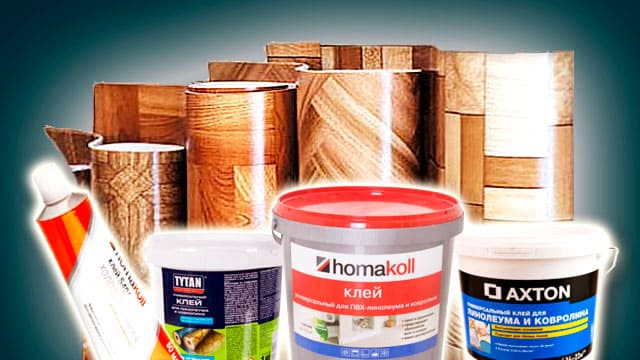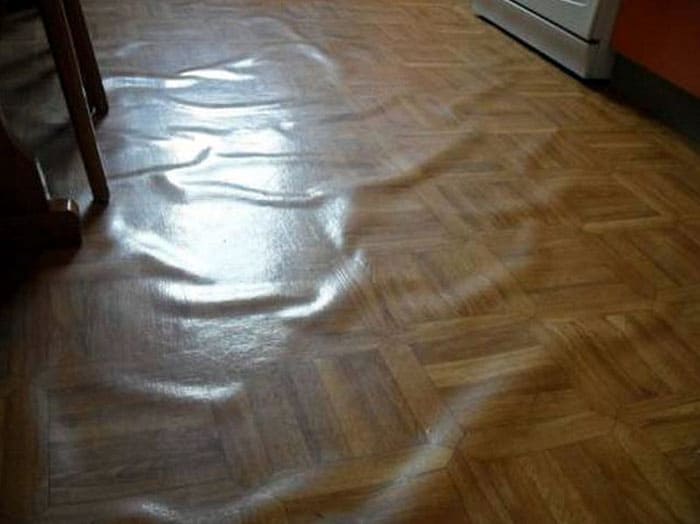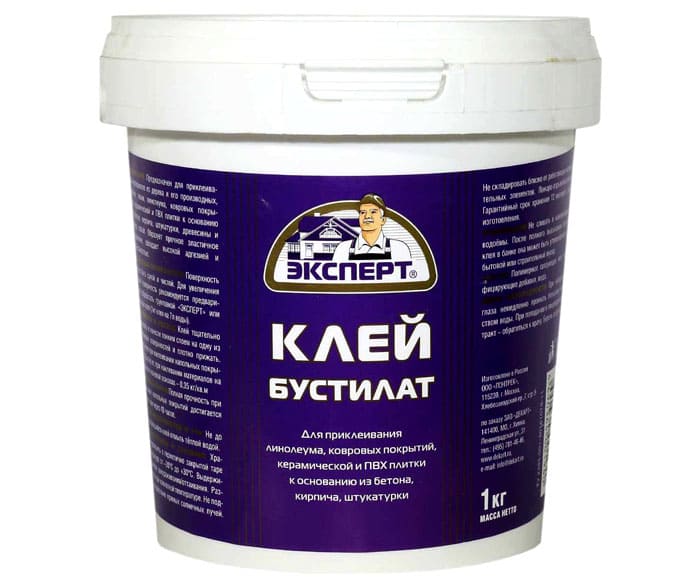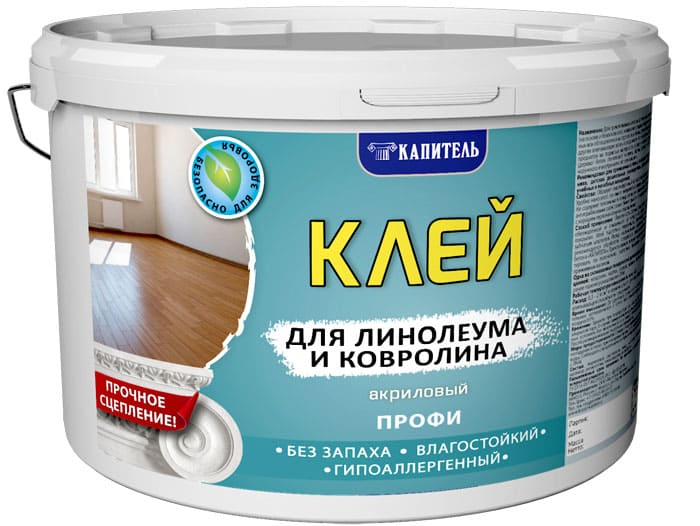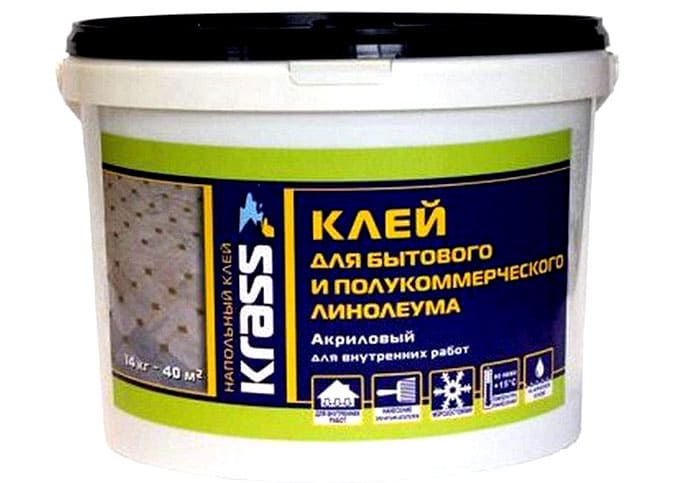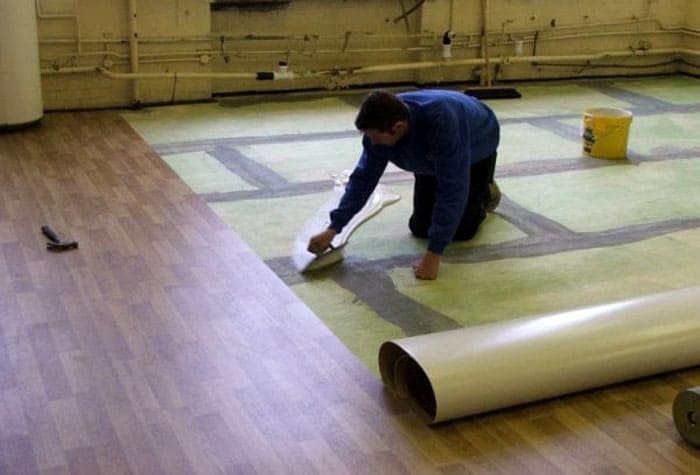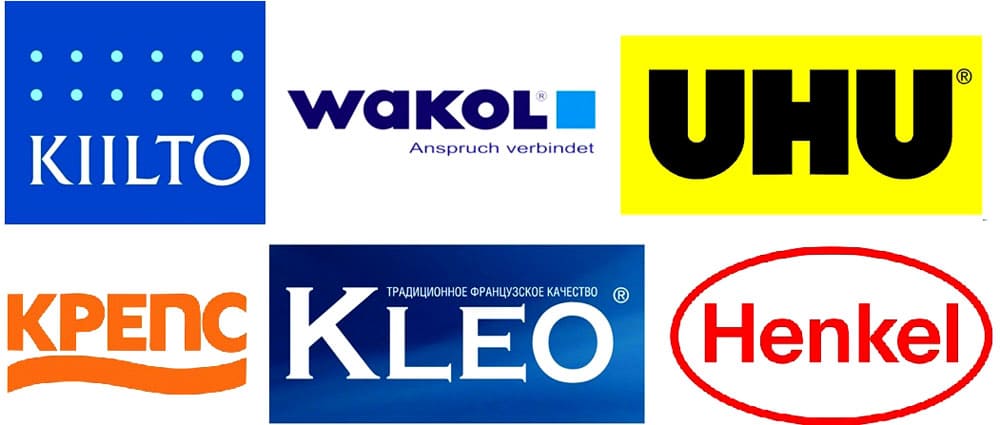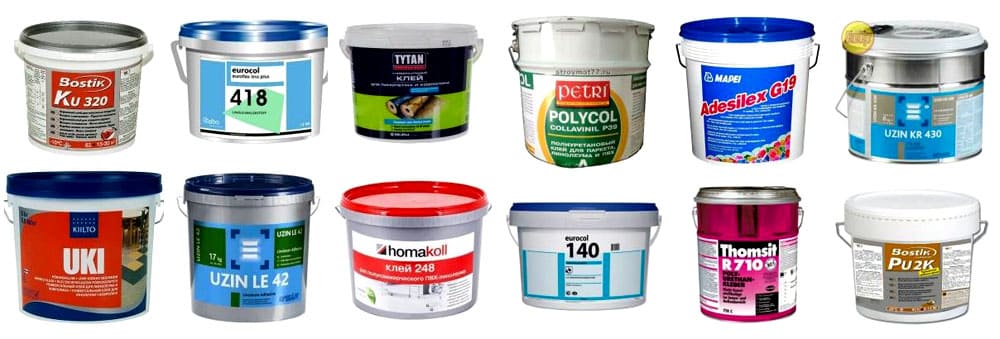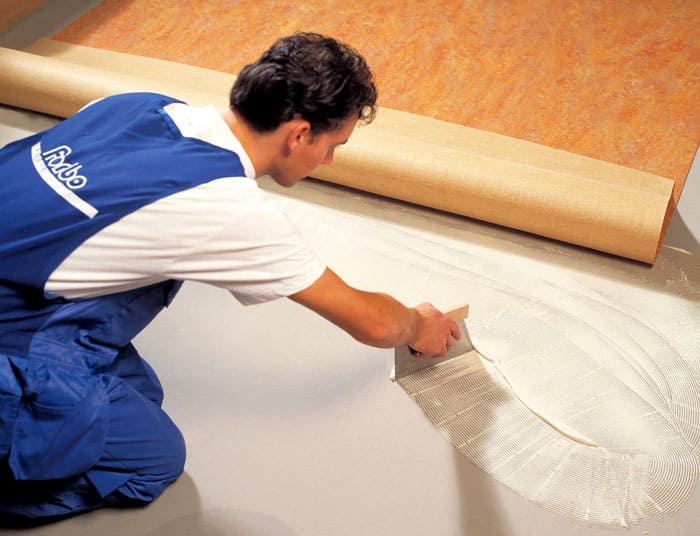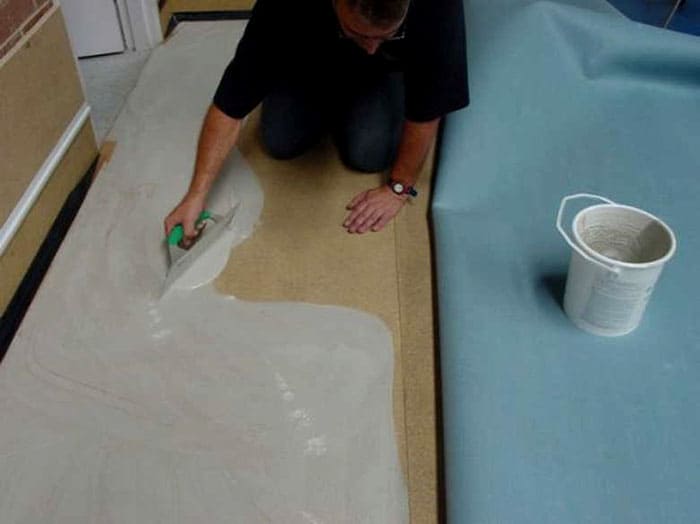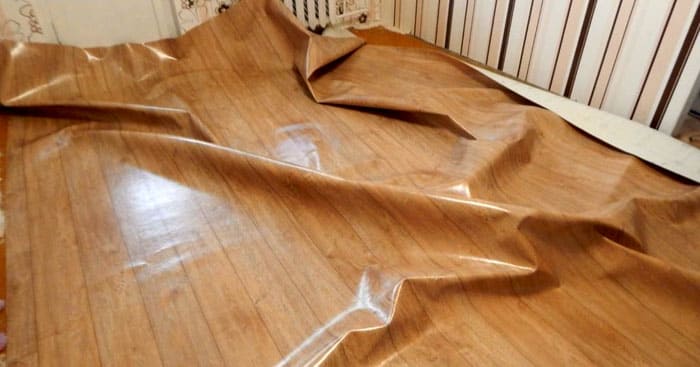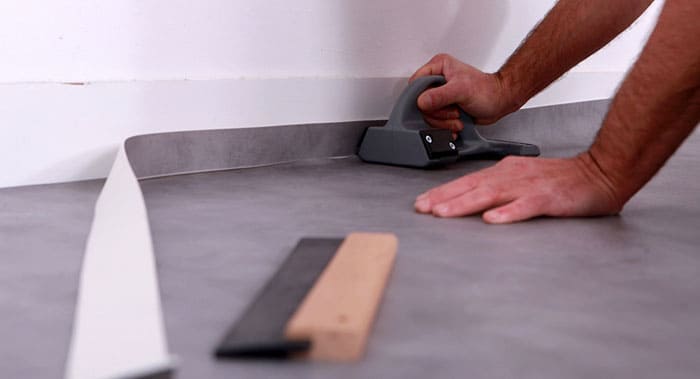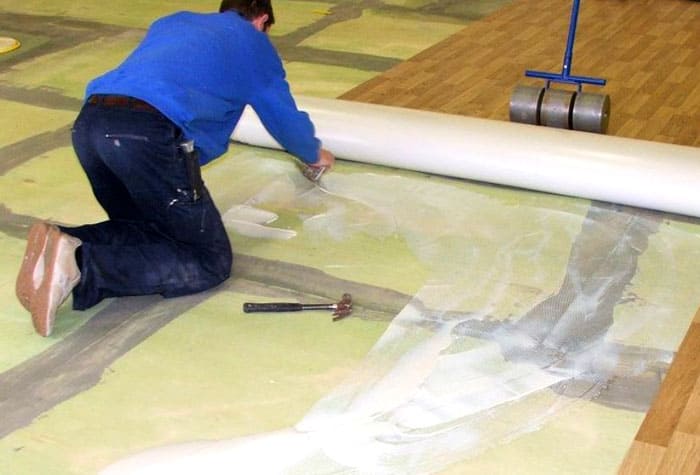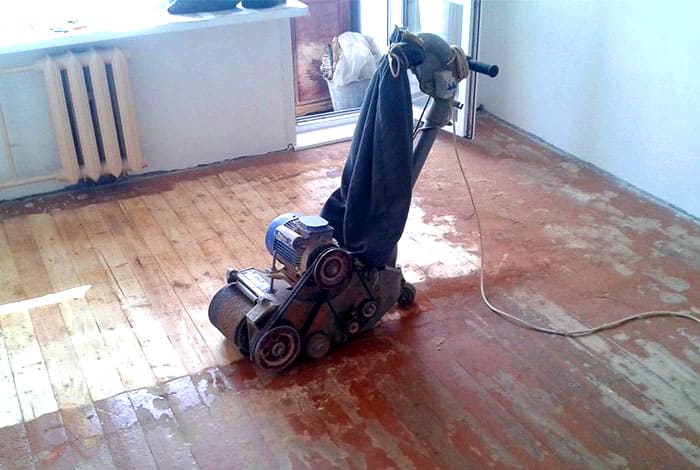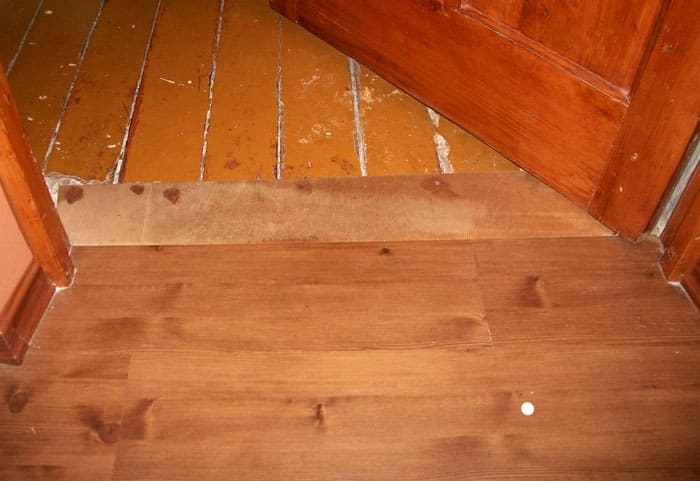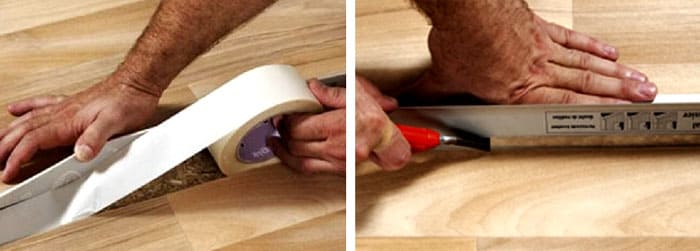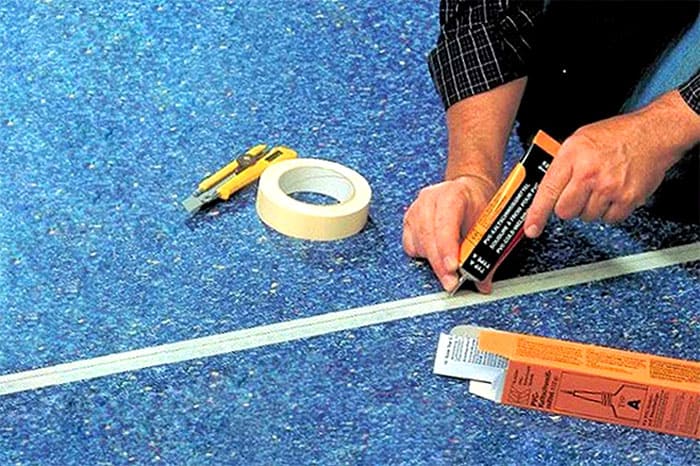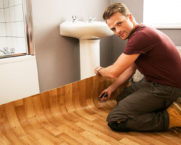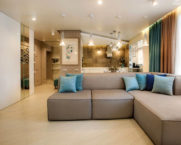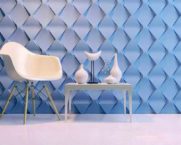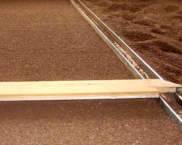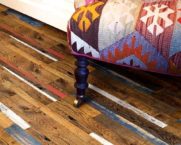How to choose glue for linoleum: varieties, advantages and disadvantages, features of use
Linoleum is a popular floor covering used in both public and residential areas. Its widespread use is due to its affordable price and rather high performance characteristics. However, during operation, linoleum can deform, which leads to loss of appearance, damage and the need for premature replacement. To minimize the negative effects of thermal deformations, the material must be tightly attached to the base. The most reliable way to do this can be glue for linoleum. How to choose the correct composition of the adhesive mixture, what are the advantages and disadvantages of different types? You will find answers to these and other questions in our article.
The content of the article
Do I need to glue linoleum to the base
Many masters, especially when renovating residential premises, just lay the linoleum on the base without any fixing. Can you do this? What are the advantages and disadvantages of gluing the floor covering?
Benefits of securing linoleum over the entire base area:
- the tensile strength and wear resistance of the flooring increases;
- the reliability of joining the seams between the canvases increases;
- deformation of linoleum in the form of waves is excluded when heavy objects move along the surface;
- no bulges are formed around the legs of the furniture;
- the period of operation, depending on the brand of linoleum, increases by 35-50%, compared with an unfixed coating.
The use of glue also has its drawbacks:
- in comparison with laying on a dry surface, fixing requires a certain time for the adhesive to dry.The specific waiting period depends on the composition of the adhesive mixture and the type of base material, more precisely, its hygroscopicity. For each brand of glue, the time of initial setting and complete drying (hardening) is indicated on the package. Thus, there is a technological pause in the work, since further repairs or furniture can be installed in the room only after the composition has completely dried;
- when using dispersion and reactive adhesives, the floor must be ideally evenly prepared. Any defects will appear on the flooring, if not immediately, then after a short period of use. When using bituminous mastics as an adhesive, minor flaws on the surface of the base are allowed, which will be masked by filling the damage with the composition. But it should be borne in mind that the cost of bitumen mastic is much higher than that of conventional dispersion adhesives.
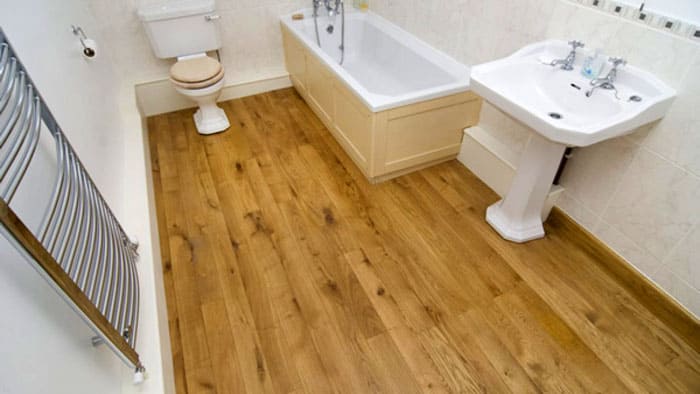
Linoleum in the bathroom needs mandatory fixing, this will provide additional waterproofing and protect the neighbors from below from flooding
Related article:
What linoleum to choose for home: types of flooring, sizes, markings, criteria for choosing the right room by room, tips and tricks - in our article.
Varieties of adhesive mixtures for linoleum
Linoleum glue brands on the market can be divided into two main categories: reactive and dispersive. They differ significantly in their characteristics, methods of application and cost. Let's consider their main operational parameters in more detail.
Dispersion adhesive mixtures
The dispersion adhesive contains acrylic, latex, chalk as a filler, cellulose glycolic acid. It is a water-based, odorless mixture. A weak, unstable specific aroma can last several hours after the end of pasting. No toxic or carcinogenic substances are released into the air during work. Recommended for residential use.
Dispersion compositions from various manufacturers of three main categories are presented on the market:
- Bustilat... It is used to fix linoleum with a fleecy or felt base. Latex, powdered chalk, carboxymethyl cellulose are used as raw materials;
- Acrylate... Thermoplastic resins are used as adhesive. The composition has a high viscosity and is used for bonding heterogeneous and homogeneous linoleum, as well as coatings based on jute and synthetic fibers. Recommended for use in rooms with high traffic. The composition ensures high adhesion of the floor covering to hygroscopic substrates.
- Humilax... The mixture contains latex and rubber. It is used to fix natural types of linoleum, as well as synthetic coatings on a felt and fabric base.
Dispersion adhesives have certain technical limitations. The main disadvantage is its high sensitivity to humidity and low temperatures. After freezing, dispersion glue loses its main properties: elasticity decreases, the adhesive layer begins to crumble under mechanical stress. At high humidity, adhesion is significantly reduced, up to peeling off the base.
Important! Dispersion adhesives are recommended to be used for fixing linoleum in rooms with a temperature of at least + 15 ° C and a humidity of no more than 60%.
Reaction adhesives
Reactive adhesive mixtures consist of two components: base and hardener.The bonding process is a polymerization reaction of a substance after mixing two main components. Epoxy and polyurethane polymers are used as active agents. The advantages of using them are as follows:
- resistance to high humidity;
- good plasticity;
- no shrinkage after drying due to the absence of water in the composition.
The price of reaction compositions is much higher than dispersion ones. They have a pungent chemical odor and emit significant amounts of volatile flammable substances during mixing and application. Therefore, during the performance of work, it is necessary to comply with fire safety requirements and ensure good ventilation of the room. All manipulations with such adhesives must be carried out only in personal protective equipment - respirators and gloves.
Reactive adhesives are used to fix homogeneous linoleum, PVC tiles, linoleum on a foam basis. Such an adhesive is unsuitable for felt and fabric substrates.
Depending on the level of adhesion, the reaction compositions are divided into three main groups, which are recommended to be used to perform a certain type of work:
- group "A" - used for local fixation of new linoleum on a clean concrete and cement-sand base. As a rule, it is used for the initial sealing of joints, making them almost invisible;
- group "C" - used for attaching linoleum to wood-based substrates: plywood, Chipboard, OSB. It can also be used as a repair compound for re-fixing seams that have diverged as a result of operation;
- group "T" - used to process the joints of polyester-based linoleum sheets. This composition is highly toxic and rather difficult to work with. It is not recommended for use by masters who do not have the appropriate experience.
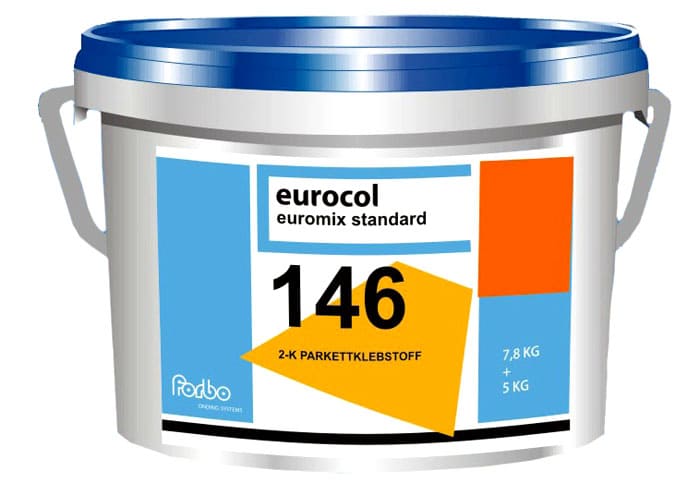
Polyurethane formulations are more versatile. They can be used both for fixing linoleum and for parquet
How to choose glue for linoleum
It is advisable to choose adhesive mixtures for fixing linoleum according to the following criteria:
- Base surface type.
A hygroscopic (absorbent) surface, which includes reinforced concrete panels, cement-sand screeds, polymer-cement fillings, wooden coatings, requires the use of dispersed water-based adhesives. For substrates with a low absorption rate: ceramic tiles, natural stone, dense rocks and similar materials, only reactive compounds are suitable.
- Floor area.
In small rooms, linoleum, as a rule, is laid with a whole canvas. The adhesive is applied in a continuous layer over the entire surface of the base. Water-based dispersion adhesives are the best option for this fixing method.
Large-area floor coverings and commercial linoleum are glued in staggered segments. In addition, a particularly strong fastening must be performed at the joints (seams) between the canvases. For this, a reactive two-component adhesive based on epoxy resin or polyurethane. Seams are additionally fixed by cold or hot welding.
- Linoleum type.
The adhesive composition is selected according to its main characteristics based on compatibility with the linoleum material. Usually, manufacturers' recommendations are indicated on the packaging. However, the basic rules are better to remember:
- the base of linoleum made of foamed PVC has better adhesion to any type of glue than fabric or jute, therefore, less expensive adhesive mixtures can be purchased for this type of coating;
- the consumption of dispersed glue for fixing coatings with a felt or jute base is quite high. If this type of linoleum is combined with a hygroscopic base surface, it is advisable to purchase high viscosity acrylic adhesives. By reducing consumption, the difference in cost with budgetary dispersed water-based adhesives will be completely leveled;
- fixation of natural linoleum should be carried out with adhesives with a minimum water content. Otherwise, moisture can be absorbed into the coating and lead to deformation.
Leading manufacturers and popular brands
Unfortunately, the quality of the glue can only be checked after using it, when the substance is not only impossible to return to the seller, but the floor coverings are often damaged. In this case, it is better not to save money, but to purchase adhesive mixtures from reliable manufacturers:
- Homakoll - the trademark belongs to the Russian company Homa Сhemical Engineering. Produces household and professional adhesive mixtures for linoleum of all types;
- Forbo erfurt - manufacturer Forbo Eurocol Erfurt from Germany. The company produces various types of construction chemicals, including dispersion adhesive mixtures;
- Werner muller - another German company specializing in the production of two-component reactive adhesives;
- WAKOL - a German manufacturer that produces construction chemicals, building materials and adhesive mixtures;
- KIILTO - a Finnish company that produces very high quality and reliable adhesives;
- UHU - German chemical concern, producing adhesive mixtures, including for fixing linoleum;
- HENKEL - a company producing the famous Moment adhesives. It has production facilities in Eastern and Western Europe.
Table 1. Glue brands and areas of application
| Glue type | Brand name | It is used for fixing |
|---|---|---|
| Bustilat | Bustilat - Universal | Felt-based linoleum |
| Acrylate | PVA - Construction | |
| Polynomial number 101 | household linoleum without a base and on a foam base | |
| Homakoll 208 | commercial homogeneous and heterogeneous linoleum; PVC linoleum; household linoleum on a foam, pile or fabric base | |
| Homakoll 248 | commercial linoleum of any type | |
| Forbo 425 Euroflex Standard | PVC linoleum; foam vinyl cover | |
| Thomsit L 240 D | natural linoleum | |
| Humilax | Gumilaks (TU 67 Ukrainian SSR 98-71) | |
| Reactionary | ADESILEX G19 | PVC and rubber coatings; natural linoleum |
Highlights of bonding technology
The process of gluing linoleum is quite simple and accessible even for inexperienced craftsmen. The basis for a quality work is a thorough preparation of the base. The use of primers, mastics or repair compounds depends on the base material.
Concrete, cement-sand screeds
Any materials where present cement, regardless of their density, are capable of absorbing moisture to one degree or another. This property is practically ideal for the process of gluing with dispersed mixtures. However, linoleum, like every finishing material, is subject to wear and tear and requires periodic renewal. The following requirements are imposed on the adhesive mixtures used for fixing linoleum on concrete:
- the fixing force must be sufficient so that the linoleum does not move on the floor surface during operation;
- the level of adhesion should allow, if necessary, to remove the material;
- the glue should not contain aggressive components capable of reacting with cement and concrete modifying additives.
Linoleum for laying on concrete or cement-sand screed must have a fabric or glyphthal bottom insulating layer. When using a homogeneous single-layer coating that does not have a base, it will be necessary to form a subfloor from fiberboard, chipboard or OSB.
The sequence of actions for gluing linoleum to a concrete floor:
- The base is thoroughly cleaned of all types of dirt, the floor is washed and dried. If there are cracks and cavities on the surface with a depth of 2 mm or more, they are sealed with a cement-based repair mortar.
- During the work, the temperature in the room should not fall below + 15 ° C. To prevent thermal deformation, linoleum must be left in a warm room for 2 days.
- Holes are drilled along the perimeter of the room for fixing the skirting boards.
- To improve adhesion, a day before starting work, the base is primed.
- It is important to ensure that the components of the primer cannot react with the main constituents of the adhesive. As a rule, compatible substances are indicated on the packaging of the adhesive mixture.
- Linoleum is rolled out, the canvas is trimmed to size. The distance from the cover to the wall should be about 5 mm.
- The cut-to-size linoleum sheet is rolled up and placed at the far end of the room. The adhesive is applied to the substrate in a thin layer with a spatula. In accordance with the requirements of the manufacturer, a certain pause is maintained for setting.
- Linoleum is pressed to the floor and smoothed out with a special construction rolling pin. Movement on the floor is prohibited for 1.5-2 days.
Bases made of wood, chipboard, plywood, OSB
The general principles for installing linoleum on wooden bases are the same as on concrete ones. The main difference is surface preparation. If necessary, paint and varnish should be removed with a building hair dryer or chemicals. After that, the floor is thoroughly washed and dried for at least a day. The gaps between the boards are putty with special polymer compounds. The drying time is indicated on the manufacturer's packaging. As a rule, it is from 1 to 2 days. Wood and wood composites are not primed. The substrate must be dry and clean. The air temperature at the time of work is not lower than + 15 ° C with a relative humidity not higher than 60%.
Joining seams
If the room is large enough, it is necessary to dock several linoleum canvases. In this case, the following actions are performed:
- The adhesive is not applied at a distance of 15 cm on either side of the joint line.
- The linoleum sheet is located with an overlap of at least 3 cm.
- The joints are connected only after the glue has completely dried under the rest of the surface.
- The joint line is cut along both canvases at the same time. A metal ruler is used as a template.
- For convenience, the edges of the canvases are pre-fixed with double-sided tape.
- After cutting, the edges are turned away, and the base is smeared with adhesive. For this, a higher quality and more expensive two-component adhesive is used.
- The edges are set in place, rolled with a roller, excess glue is removed, and a load is placed on the surface.
- Drying time is at least two days.
Video of the gluing process
Summing up
Despite the rather laborious process of gluing linoleum, as well as certain difficulties in choosing an adhesive composition, the advantages in the further operation of the fixed floor covering fully compensate for all costs incurred.



